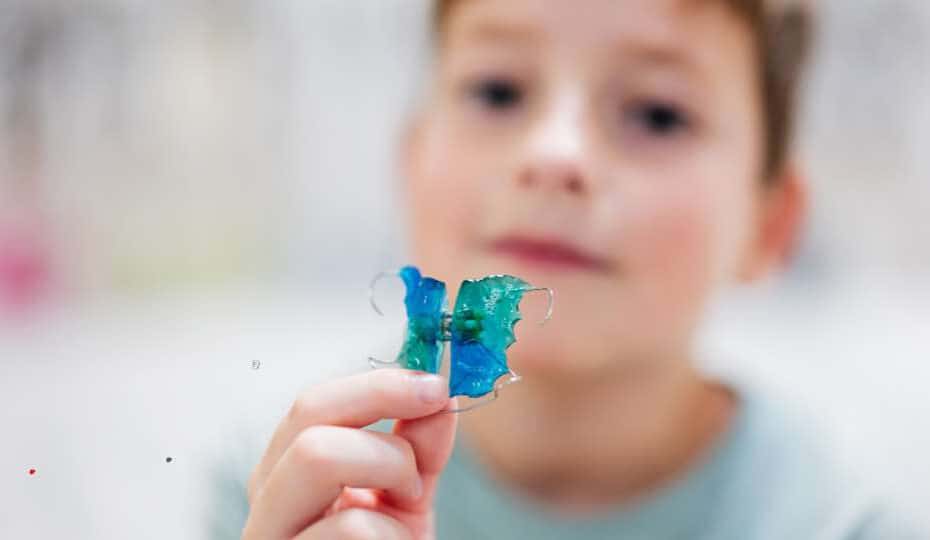If you thought that orthodontics was only for teenagers and adults, you should know that the orthodontic associations around the world recommend the first orthodontic examination as early as the age of 7. Why so early? Because early treatment at an early age can prevent future orthodontic problems, save tooth extractions, pain, and money, and give your child self-confidence from an early age.
An orthodontic examination at a young age allows you to detect developmental problems as early as possible, and treat them effectively, before they get worse. This test can reveal bite problems, tooth density, or abnormal jaw growth, allowing the orthodontist to outline a personalized treatment plan. We contacted IV " R omer Fleisig , Orthodontist Expert Alignment Teeth Kids , who clarified that an orthodontic examination at a young age is like a routine examination at the pediatrician. An orthodontic examination is an integral part of maintaining a child's oral health.
Orthodontic examination – preventive examination
Not every child who undergoes an orthodontic examination will need orthodontic treatment. The orthodontic examination is necessary in order to identify potential problems that require early intervention and prevent them from worsening in time. An orthodontist who specializes in orthodontics can identify early signs of these problems, such as: tooth density, bite problems, misalignment between the jaws, inverted bite, impacted teeth, etc. Moreover, a specialist orthodontist can also identify negative habits such as thumb sucking, tongue thrusting, tooth erosion, which can affect the development of teeth and jaws. Stopping these habits early can help with normal oral development and minimize the potential for orthodontic problems in the future. Early stage treatment allows the orthodontist to tailor a personalized treatment plan that can direct the growth of the teeth and jaws to their correct position. The early examination may, often, shorten complex treatments down the road, reduce the need for invasive interventions, and in some cases, additional future orthodontics.
Types of Orthodontic Treatments for Children
According to the findings of the examination, the orthodontist will recommend a treatment plan, if an orthodontic problem has indeed been identified.
Today, several types of treatment are offered that are suitable for children, including metal equipment, traditional braces, transparent braces and clear aligners.
Traditional braces – consist of small metal braces (cubes), which are glued to the front of the teeth and a metal wire that connects them. The braces and floss exert gentle forces on the teeth, allowing them to be gradually moved to their desired position.
The metal wire is fixed to the braces using small rubber bands, and you can even use colored rubber bands that are very popular with children and make the process of straightening teeth a fun experience. Children can choose their favorite colors, and change them at each meeting, depending on the color of their clothes or the color of their favorite sports team.
Clear braces – very similar to traditional braces, but instead of metal braces and protrusions, the braces in clear braces are less prominent because they are made of porcelain or zirconia in the color of the tooth. Similarly, the thin wire that runs between the braces is also made of transparent material or the color of the tooth, so that the bridge is almost invisible. Even with transparent braces, you can use colorful and cheerful rubber bands.
Clear aligners – Clear aligners, also known as Invisalign, are sets of aligners, customized for the child. The aligners apply gentle pressure to the teeth, gradually moving the teeth to their desired position.
The clear aligners, unlike braces, are removable, so that the child can eat and drink normally, as well as brush his teeth normally.
The aligners do not interfere with sports activities, or any other social activity.
Sometimes the orthodontist will offer a mouth protector, which will protect the The orthodontic devices on the teeth against potential damage from sports injuries, teeth grinding and other physical injuries.
Choosing the Right Orthodontist for Children
One of the most important factors in the success of the orthodontic process among children is choosing the right orthodontist for children. The orthodontist plays a significant role in the treatment experience and in the ability to get the child to cooperate throughout the process.
How do you know that the orthodontist you have chosen is right for your child?
First, choose an orthodontist who is qualified and has extensive experience in treating children. A license from the Ministry of Health and affiliation with the Israeli Orthodontic Association attest that the orthodontist met strict requirements and underwent special training, including training in the treatment of children.
During the initial consultation, pay attention to the extent to which the orthodontist explains the treatment options and meets your expectations regarding alleviating your and your child's concerns, and the extent to which the child connects with the orthodontist.
Consider choosing an orthodontist, whose clinic is located near where you live. Orthodontic treatment is a long-term treatment, which lasts between a year and a half to two years, and requires regular visits every 6-8 weeks.
Read recommendations and reviews about the orthodontist, ask patients about their level of satisfaction, and make an informed decision when choosing an orthodontist for your child.
Orthodontic treatment for children is not only an aesthetic matter, but also a health issue, affecting the function of the mouth, jaws, and overall health. Investing in orthodontic care with an orthodontist who has a child-friendly, sensitive, empathetic, and inclusive approach is an investment in your child's long-term health and self-image.
You are invited to read more articles in the world of medicine, here .


